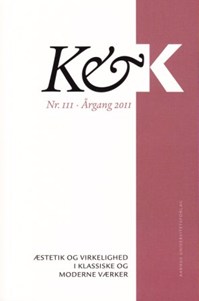Overgangens kunst. Modernitet og skepsis i Richard Wagners æstetik
DOI:
https://doi.org/10.7146/kok.v39i111.15759Nøgleord:
Richard Wagner, aesthetic writings, transitional art, modernity, skepticism, ambivalenceResumé
TRANSITIONAL ART MODERNITY AND SCEPTICISM IN RICHARD WAGNER’S AESTHETICS
Richard Wagner is unique among creative artists in that he published copious volumes of theoretical writings to accompany and explain his artistic work. The present paper probes these writings and asks why Wagner should feel the need to constantly explain and justify himself. The answer is found to lie, not so much in the psychological make-up of the artist, as in the very kernel of his aesthetic impulse: the sceptical rejection of tradition and convention, and the reclaiming of an authentic, “purely human”, artistic form. Wagner inhabits a position of ambivalent modernity: he demands the destruction of old totalities of meaning while simultaneously structuring new ones. Nietzsche branded it “the lie of the great style”, a more recent and sympathetic commentator (Richard Klein) has spoken of Wagner’s “pluralist modernism”. The present paper agrees with Theodor W. Adorno that the “total work of art” is indeed a “phantasmagoria” but finds that Wagner, in his theorizing about it, lays bare certain inescapable conditions, risks as well as possibilities, of art and expression in the modern world.
Downloads
Publiceret
Citation/Eksport
Nummer
Sektion
Licens
Tidsskriftet følger dansk ophavsret.





